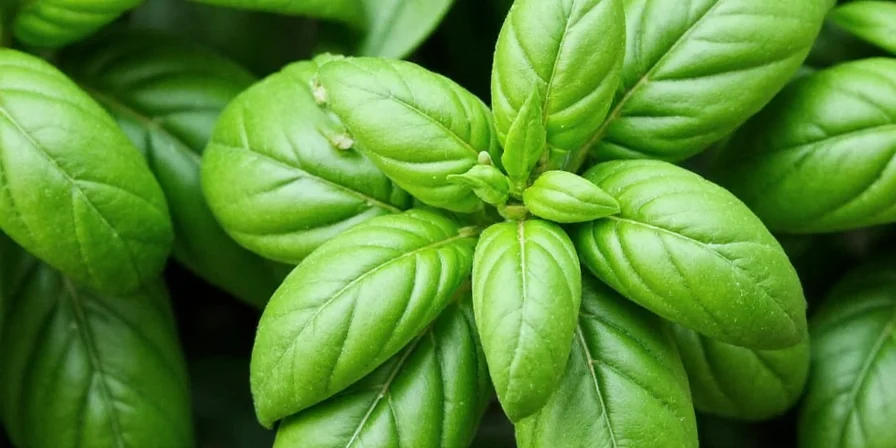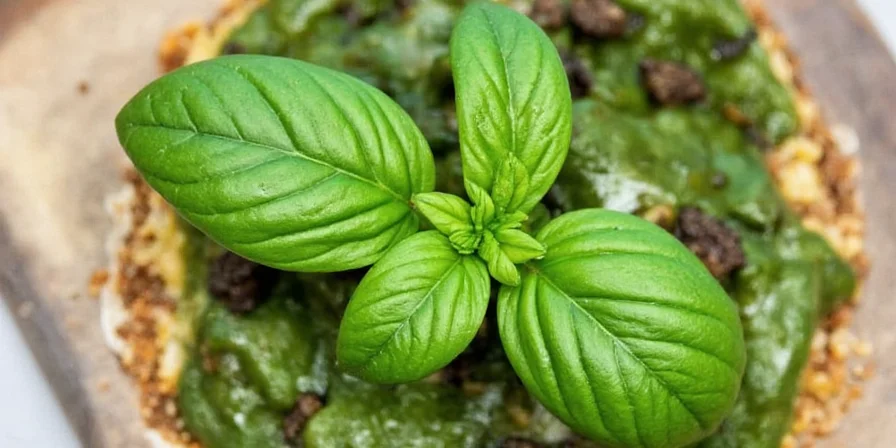Holy Basil (Tulsi) is a sacred herb native to India with significant medicinal properties in Ayurvedic medicine. Known scientifically as Ocimum tenuiflorum, this powerful adaptogen offers stress relief, immune support, and culinary versatility that sets it apart from common sweet basil. This comprehensive guide delivers evidence-based information about Tulsi's authentic uses, health benefits, and cultivation methods for both wellness enthusiasts and home cooks.
Table of Contents
- What Is Holy Basil (Tulsi)? Definition and Origins
- Holy Basil Benefits: Scientifically Supported Health Applications
- Cooking with Tulsi: Authentic Indian Recipes and Techniques
- How to Grow Tulsi at Home: Step-by-Step Guide
- Tulsi vs Regular Basil: Key Differences Explained
- Holy Basil FAQ: Expert Answers to Common Questions
What Is Holy Basil (Tulsi)? Definition and Origins
Holy Basil, or Tulsi (Ocimum tenuiflorum), is a revered medicinal plant in Ayurveda with a 5,000-year history of therapeutic use in India. Unlike Italian sweet basil commonly found in Western cuisine, Tulsi has a distinctive peppery-clove flavor profile and demonstrates adaptogenic properties that help the body manage stress responses.

According to research published in the Journal of Ayurveda and Integrative Medicine, Tulsi contains essential compounds like eugenol, rosmarinic acid, and ursolic acid that contribute to its therapeutic effects. The plant holds religious significance in Hinduism and is commonly grown in "Tulsi Vrindavan" (sacred planters) outside Indian homes.
| Type of Basil | Scientific Name | Active Compounds | Traditional Medicinal Uses |
|---|---|---|---|
| Holy Basil (Tulsi) | Ocimum tenuiflorum | Eugenol, Rosmarinic Acid, Ursolic Acid | Stress management, respiratory support, immune enhancement |
| Sweet Basil | Ocimum basilicum | Eugenol, Linalool, Methyl Cinnamate | Digestive aid, mild antimicrobial properties |
| Lemon Basil | Ocimum × citriodorum | Citral, Limonene, Eugenol | Calming effects, digestive support |
Holy Basil Benefits: Scientifically Supported Health Applications
While Tulsi has been used traditionally for centuries, modern research validates many of its health benefits. Note that Tulsi should complement—not replace—medical treatment, and you should consult your healthcare provider before using for specific health conditions.
Evidence-Based Holy Basil Benefits
- Stress and Anxiety Reduction: A 2014 study in Indian Journal of Psychological Medicine found that 12 weeks of Tulsi supplementation significantly reduced stress, anxiety, and depression scores in adults.
- Immune System Support: Research in Phytotherapy Research indicates Tulsi enhances immune function through modulation of immune cell activity and antibody production.
- Blood Sugar Management: Clinical trials suggest Tulsi may help maintain healthy blood sugar levels, making it valuable for metabolic health support.
- Respiratory Health: Tulsi's anti-inflammatory and antimicrobial properties make it effective for seasonal respiratory support, as documented in traditional Ayurvedic texts.

Cooking with Tulsi: Authentic Indian Recipes and Techniques
Using Tulsi in cooking differs significantly from sweet basil. Its stronger flavor means careful application is essential for authentic results:
Traditional Tulsi Culinary Applications
- Authentic Tulsi Tea: Simmer 8-10 fresh Tulsi leaves in 1 cup water for 5 minutes. Add 1/2 inch grated ginger and 1 tsp honey. Strain and enjoy. This traditional preparation maximizes bioactive compound extraction.
- Tulsi Chutney: Blend 1 cup fresh Tulsi leaves, 1/2 cup mint, 1/4 cup grated coconut, 1 green chili, 1/2 inch ginger, and salt to taste. Perfect with dosa and idli.
- Kadha (Ayurvedic Tonic): Boil Tulsi leaves with neem leaves, turmeric, and black pepper for respiratory wellness. A traditional preparation used during seasonal transitions.
- Tempering Technique: Add 4-5 Tulsi leaves to hot oil before adding other spices in lentil dishes (dal) for authentic flavor.
- Herbal Rice: Mix fresh Tulsi leaves into rice during the last 5 minutes of cooking for aromatic basmati rice.

How to Grow Tulsi at Home: Step-by-Step Guide
Successfully growing Tulsi requires specific conditions different from common basil varieties. Follow these evidence-based methods for optimal growth:
Complete Tulsi Cultivation Guide
- Optimal Planting Time: Start seeds 4-6 weeks before last frost date or year-round in zones 10-11
- Soil Requirements: pH 6.0-7.5, well-draining mix with 30% sand for proper drainage
- Light Needs: Minimum 6 hours direct sunlight daily (8+ hours preferred)
- Watering Schedule: Water when top inch of soil is dry; avoid overwatering which causes root rot
- Fertilization: Every 4 weeks with balanced organic fertilizer (5-5-5 NPK)

Harvesting and Preservation Tips
- Harvest in morning when essential oil concentration is highest
- Cut stems 6 inches above soil to encourage bushier growth
- Dry leaves in shaded, well-ventilated area (avoid direct sunlight)
- Store dried leaves in airtight container away from light
- Freeze fresh leaves in olive oil for year-round use
Tulsi vs Regular Basil: Key Differences Explained
Understanding these critical distinctions prevents culinary mistakes and ensures proper usage:
- Flavor Profile: Tulsi has spicy, clove-like notes with subtle licorice undertones versus sweet basil's milder, sweeter profile
- Heat Tolerance: Tulsi withstands cooking better than sweet basil, which loses flavor when heated
- Medicinal Properties: Only Tulsi contains significant adaptogenic compounds validated by research
- Cultural Significance: Tulsi holds religious importance in Hinduism; sweet basil has no equivalent cultural status
- Growing Conditions: Tulsi requires more sun and warmth than sweet basil
Holy Basil FAQ: Expert Answers to Common Questions
Here are evidence-based answers to frequently searched questions about Holy Basil:
Is Holy Basil the same as regular basil?
No. Holy Basil (Tulsi) is Ocimum tenuiflorum while culinary basil is Ocimum basilicum. They have different chemical compositions, flavors, and medicinal properties. Tulsi contains higher concentrations of eugenol and other therapeutic compounds.
What are the side effects of Holy Basil?
When used in culinary amounts, Tulsi is generally safe. However, high medicinal doses may interact with blood thinners and diabetes medications. The European Medicines Agency notes potential blood-thinning effects at therapeutic doses.
Can I drink Tulsi tea every day?
Yes, 1-2 cups daily is generally safe for most adults. A study in Preventive Nutrition and Food Science found no adverse effects from daily consumption over 12 weeks. Pregnant women should consult their healthcare provider before regular consumption.
How is Tulsi different from Holy Basil?
They're the same plant—Tulsi is the Hindi name for Holy Basil. The terms are used interchangeably, though "Tulsi" specifically refers to the variety used in Ayurvedic medicine.
What's the best way to store fresh Tulsi?
For maximum shelf life: trim stems, place in glass with 1 inch of water, cover loosely with plastic bag, and refrigerate. Change water every 2 days. Properly stored, Tulsi stays fresh for 7-10 days.
Conclusion
Holy Basil (Tulsi) represents a powerful intersection of culinary tradition and evidence-based wellness. Unlike common basil varieties, Tulsi's unique chemical profile offers adaptogenic benefits validated by modern research while maintaining its sacred place in Indian culture. By understanding the distinctions between Tulsi and regular basil, implementing proper growing techniques, and using evidence-based preparation methods, you can maximize both the flavor and wellness potential of this remarkable herb. Whether you're seeking authentic Indian cooking techniques or science-supported natural wellness approaches, incorporating Tulsi correctly into your routine delivers tangible benefits backed by both tradition and research.











 浙公网安备
33010002000092号
浙公网安备
33010002000092号 浙B2-20120091-4
浙B2-20120091-4